Toulouse currently sit in 12th place in Ligue 1, 9 points clear of the relegation zone. In a season where there are additional relegation spots when compared to the usual three, the challenge of staying up becomes more difficult. Toulouse though are enjoying what looks like a successful season. Safety is not guaranteed, although the points buffer and limited number of matches left should mean they will stay safe. In addition, Toulouse find themselves in a Coupe de France final against Nantes. Although the path hasn’t been too difficult, with Reims the only competitor from the same division as Toulouse, the achievement is still impressive and the potential of a trophy remains a mouth-watering sight.
In the league, Toulouse have scored 10/48 goals from set pieces, meaning that 21% of all goals scored have been scored from dead ball situations, with these equalling around 6 points won. These goals could be the difference between survival and relegation when looking at the league table come the end of the season. Toulouse rank 3rd in terms of xG from set plays, with a value of 10.09, only bettered by Montpellier and Marseille, which clearly shows how strong Toulouse have been from these situations in comparison to other sides in the league.
In this tactical analysis, we will look into the tactics used by Toulouse, with an in-depth analysis of how they have been able to use several different routines to create high-quality chances in their variations of corners. This set-piece analysis will look at the reasons behind the different routines used and how their use of decoy runs in particular have allowed them to be a unique threat from dead balls.
Decoy movements
One of Toulouse’s key methods to creating chances from corners has come through the use of decoys to create 1v1 opportunities in target areas for the target player. Being able to have a 1v1 opportunity in an open area provides the attacker with a big advantage as it becomes easier to create separation from his marker through changes in either direction or speed of movement. Once that separation is achieved, the target player is able to attack the cross unopposed from within 6-12 yards from goal, usually resulting in a high xG chance being created.
The image below displays how Toulouse have utilised decoys to create space inside the box. In this particular example, the goal is to deliver the ball to the near side of the six-yard box. In order to drag defenders away from the target area, Toulouse bring four attackers towards the far side of the box which attracts all the man markers away from the near side of the six-yard area. Usually, the near side of the six-yard box has zonal markers protecting it. The example below shows how Toulouse have brought over a player to be a short passing option in order to drag the zonal marker away from the target area.
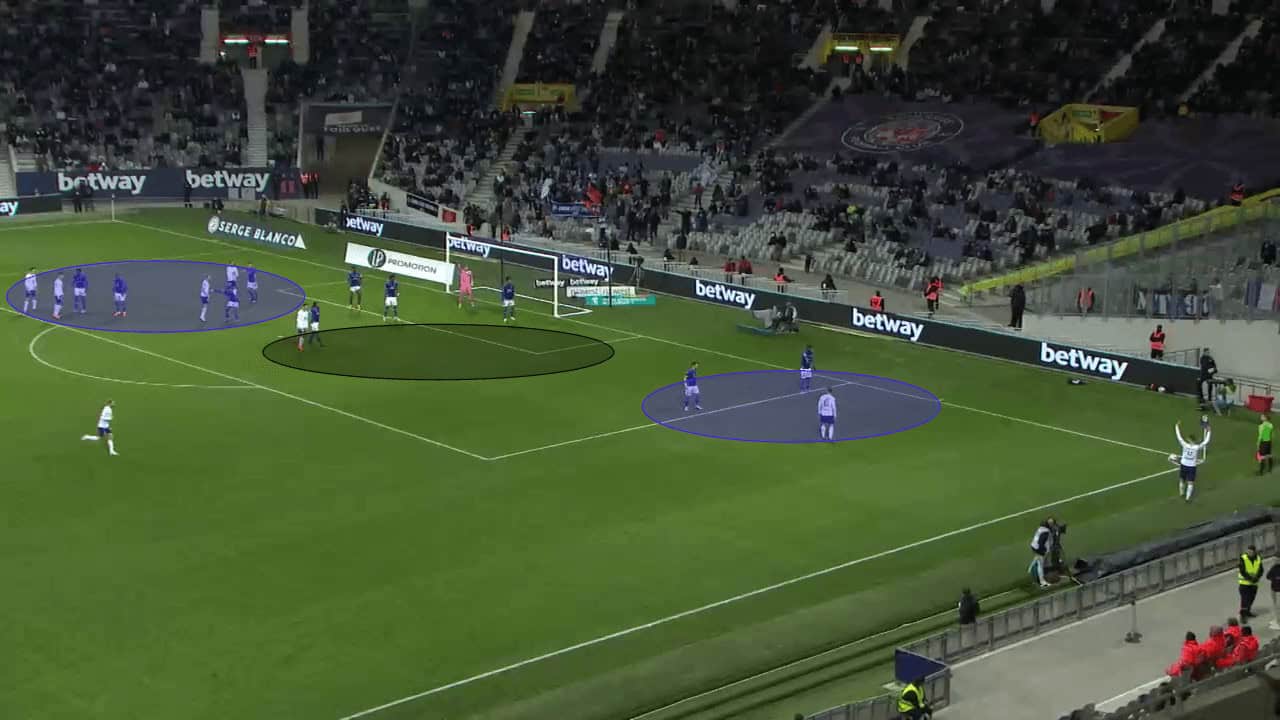
Once the space is created around the near side of the six-yard box, the target player must time his run correctly. As the corner is about to be delivered, the target player must create separation, through the use of body feints to prevent his marker from staying tight to him. This allows him to arrive in the target area unmarked and attempt a volley on goal from inside the six-yard box.
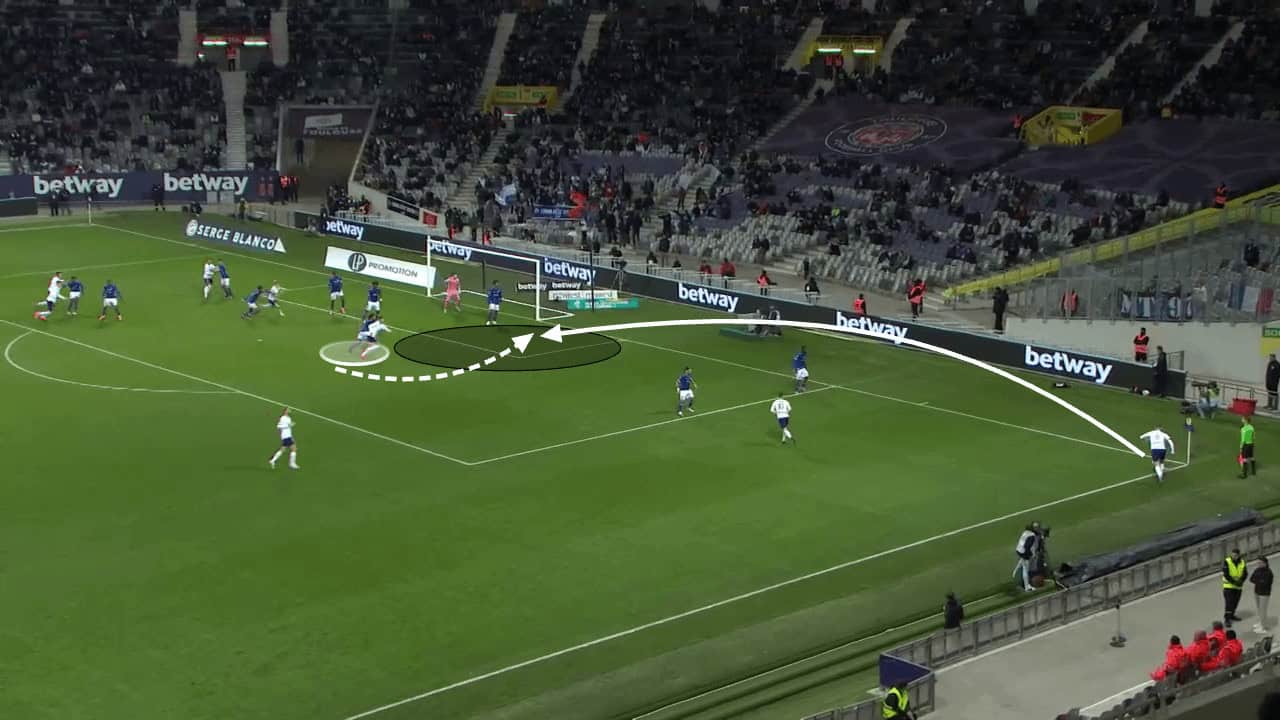
Through the use of the same principles, Toulouse have also attempted to use decoys to create chances through attacking the far side of the six-yard box. This type of routine is most effective against teams who heavily utilise zonal marking, where space inside the six-yard box is limited. In these scenarios, it is extremely difficult to make the first contact by the near post, whereas heavy zonal marking often means players deeper from goal can stay unmarked.
Like in the earlier example, Toulouse have used a group of decoys to lure the Strasbourg defence away from the target area. With the majority of Toulouse attackers in the defenders’ view and the runs being made across the face of them, it makes the zonal markers believe the intention is to attack the near side of the six-yard box. As the defensive players naturally step forward to track the decoy runs, more space is created at the far side of the six-yard box which gives the target player more time to increase the likelihood of making the first contact.
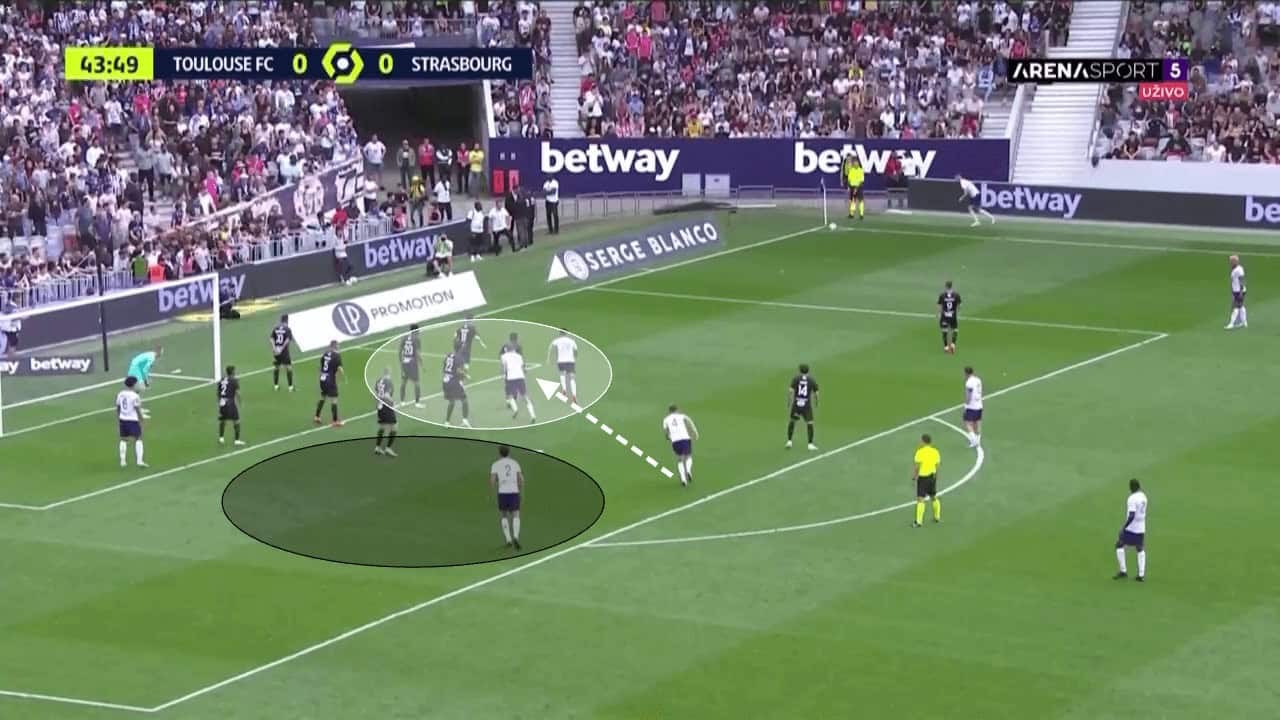
With deeper crosses, it becomes harder to score directly from the first contact due to the difficulty of being able to generate enough power to trouble the keeper from around 12 yards. As a result, in these instances, the aim is to knock the ball down into a more dangerous area where the aim is that attacking players can react to the knockdown quicker and redirect the ball into the back of the net.
With the attack of the second ball, power is not necessary due to the close proximity to goal, meaning that it would be impossible for a goalkeeper to react to a redirected effort on goal which is three yards away. In the example below, the Toulouse attacker is able to make the first contact after the defenders are dragged towards the near side of the six-yard box. He then heads the ball into the six-yard box, where the remaining attackers are all expecting the knockdown and are able to attack the second ball due to their early movement into the target area.
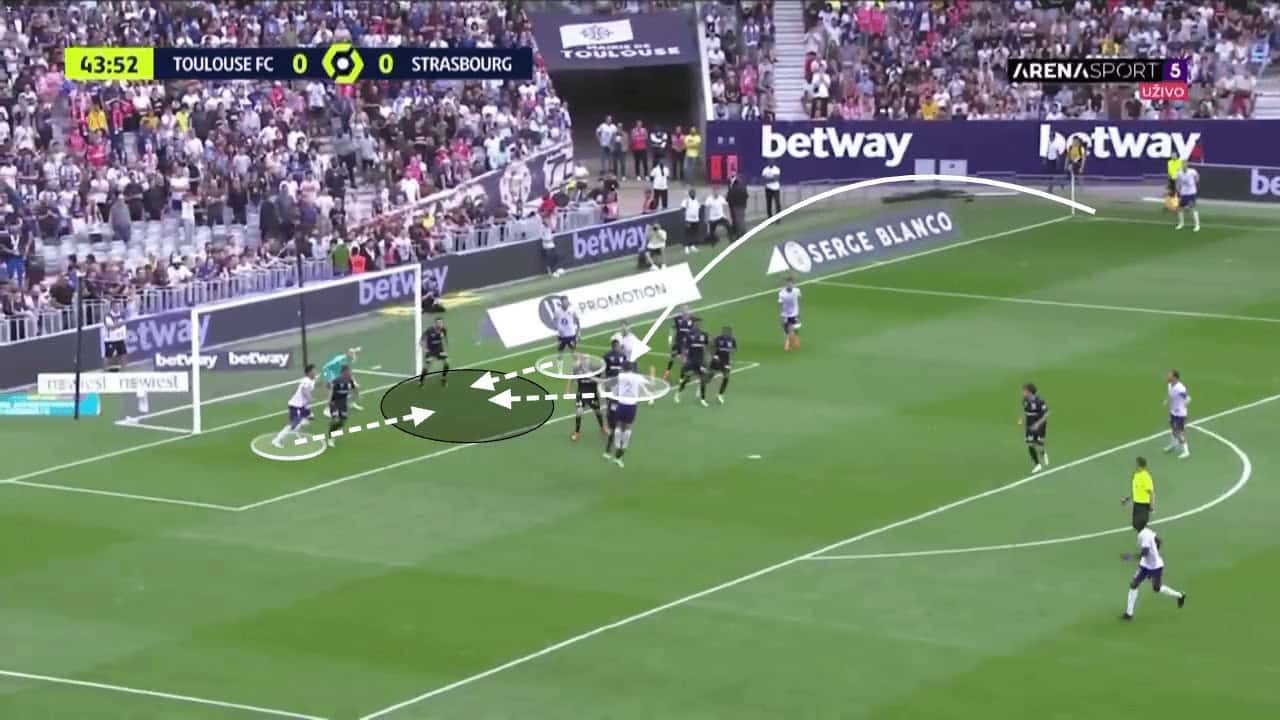
One final way in which Toulouse have utilised decoy runs to create chances from corners has been through attacking central areas of the six-yard box. Being able to attack an aerial duel inside the six-yard box from a central area leads to higher quality chances than from the near or far side of the six-yard box where the angles are limited, although this sort of delivery is harder to precisely make.
In these instances, Toulouse have used a slightly different method in order to create the space. Rather than dragging defenders away prior to the corner being delivered, they start in the target area before dragging defenders away as the ball is crossed in. The later use of the decoy run gives defenders less time to adjust their run and move towards the ball which is important when attempting to deliver the ball into such a confined space in the middle of the six-yard box. The blue lines below show the decoy movements dragging defenders away from the central area inside the penalty area.
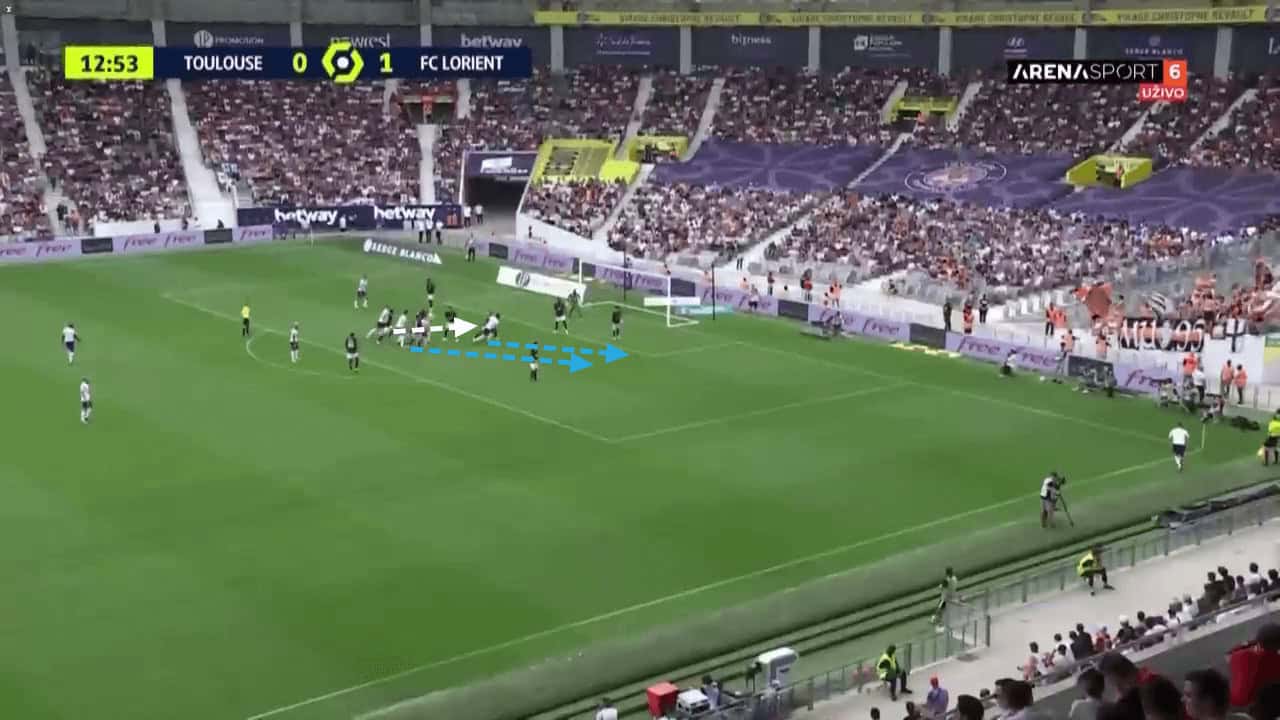
After the decoy runs allow the central zones to be less congested, it provides the target player with the opportunity to use a run-up when attacking the ball inside the centre of the six-yard box. With fewer people in the way, the target player can sprint towards the six-yard box which will allow him to gain the advantage in the aerial duel due to the added spring in his jump, increasing the likelihood of making the first contact.
Making the first contact from such a dangerous position (centre of the six-yard line), results in a high percentage chance of scoring a goal, due to the lack of reaction time the goalkeeper has, along with the attacker having the option to direct his header at either side of the goal.
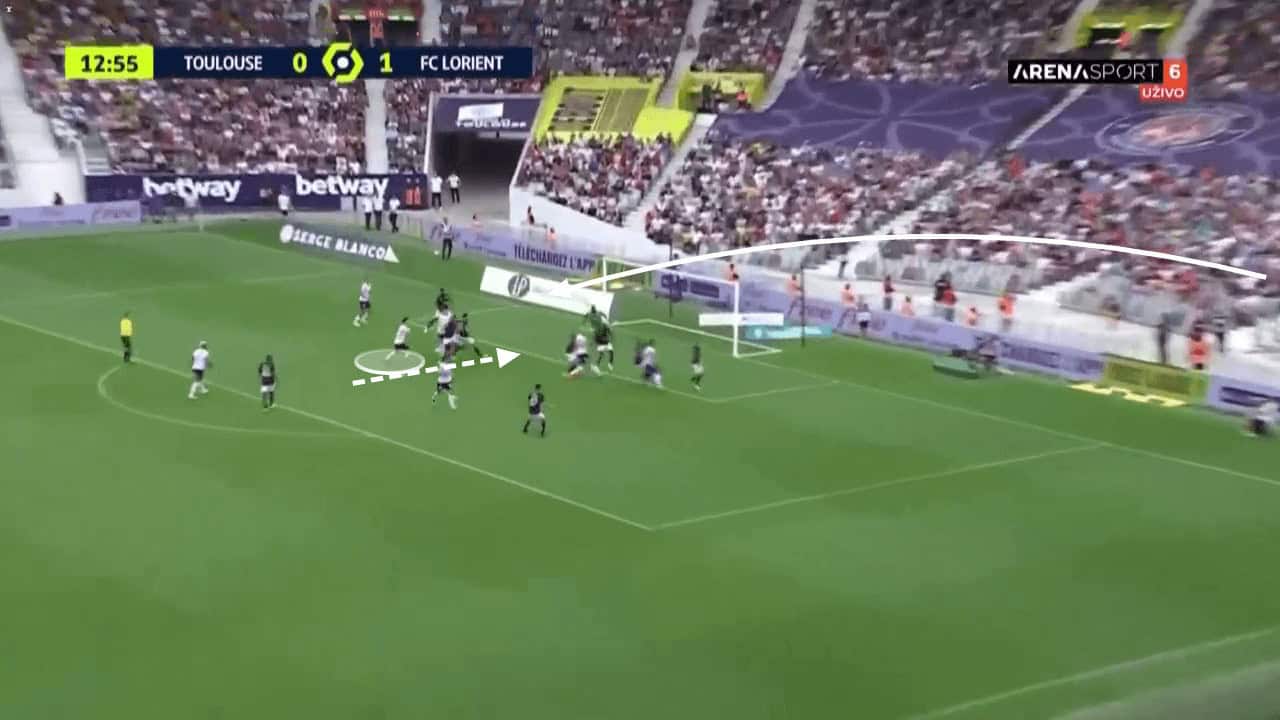
Near post variation
Toulouse have utilised near-post variations in order to remain unpredictable from dead balls. Using near-post flick-ons allows the attacking team to disorganise the defensive team’s shape, thus increasing the chance of making the second contact as well as the first. Like in the earlier examples, the target player starts away from the target area in order to make sure there is space for the corner taker to deliver the ball into. He then makes the sharp movement into the target area from where the intention is to flick the ball across the face of the goal.
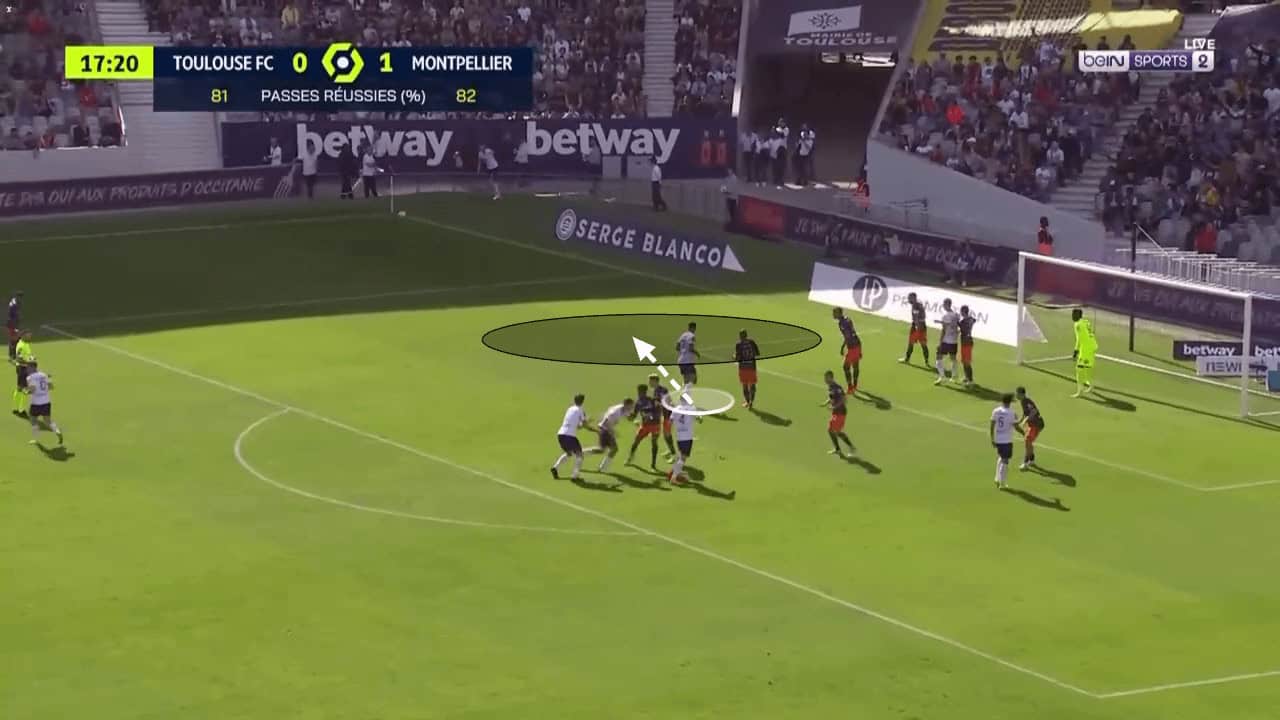
We can see in the second phase of the corner pictured below, defenders lose track of their markers as Toulouse make the first contact. While the defenders keep their eye on the ball in order to react to the change of direction of the ball, they lose track of the attackers which allows the Toulouse attackers to drift into the six-yard box unmarked. These instances lead to high-quality chances where an effort on goal is made from inside the six-yard box.
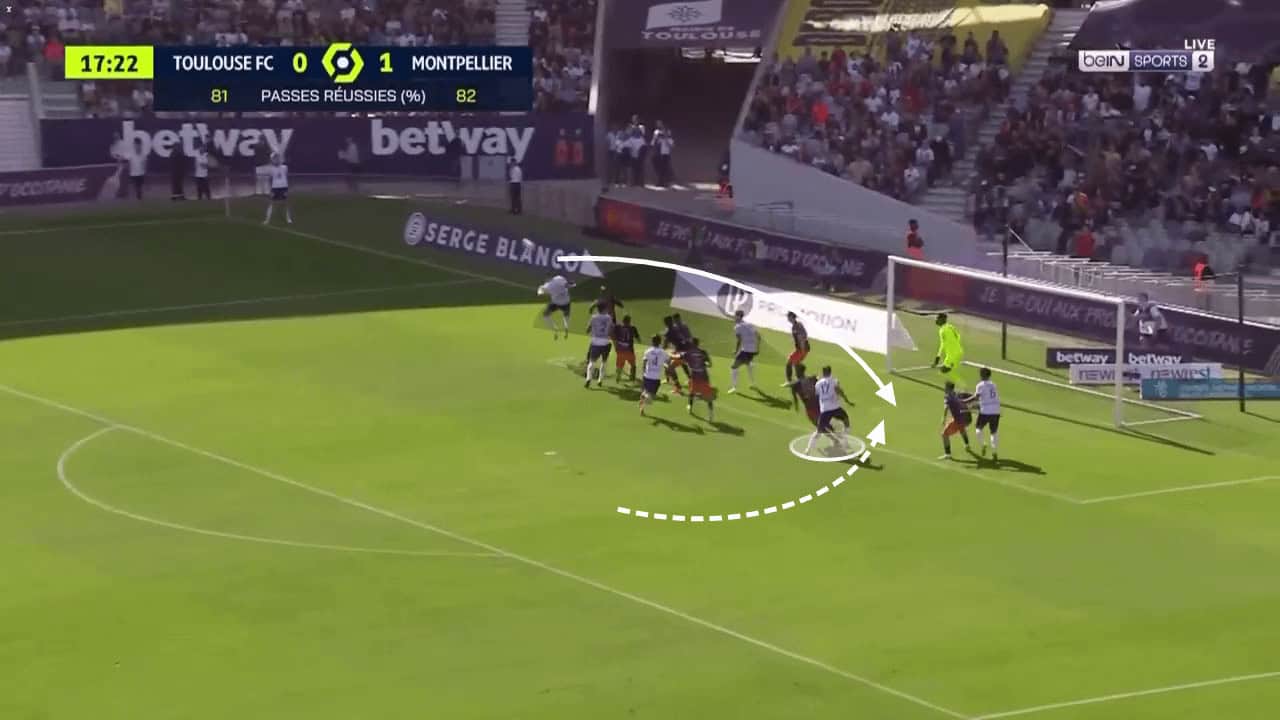
Use of Screens
At times, Toulouse have utilised screens to create extra space for target players, although these screens have a unique use in comparison to what is usually expected. A screen usually provides an attacker with the opportunity to attack the ball unopposed, with the lack of defensive pressure providing the player with an advantage in the aerial duel. However, Toulouse have only utilised screens during low crosses, in order to give their players the possibility of taking a shot at goal without any defenders being able to block the shot.
Like in the earlier example, when attempting to deliver the ball into central areas, Toulouse have used decoy players who start in the target area and vacate it, dragging defenders away from the target area. The example below illustrates the decoy run, as well as the line of attackers performing screens to prevent anyone from being able to intercept the cross. Meanwhile, the target player peels into the target zone from the back of the queue where he can arrive unmarked to attack the low cross.
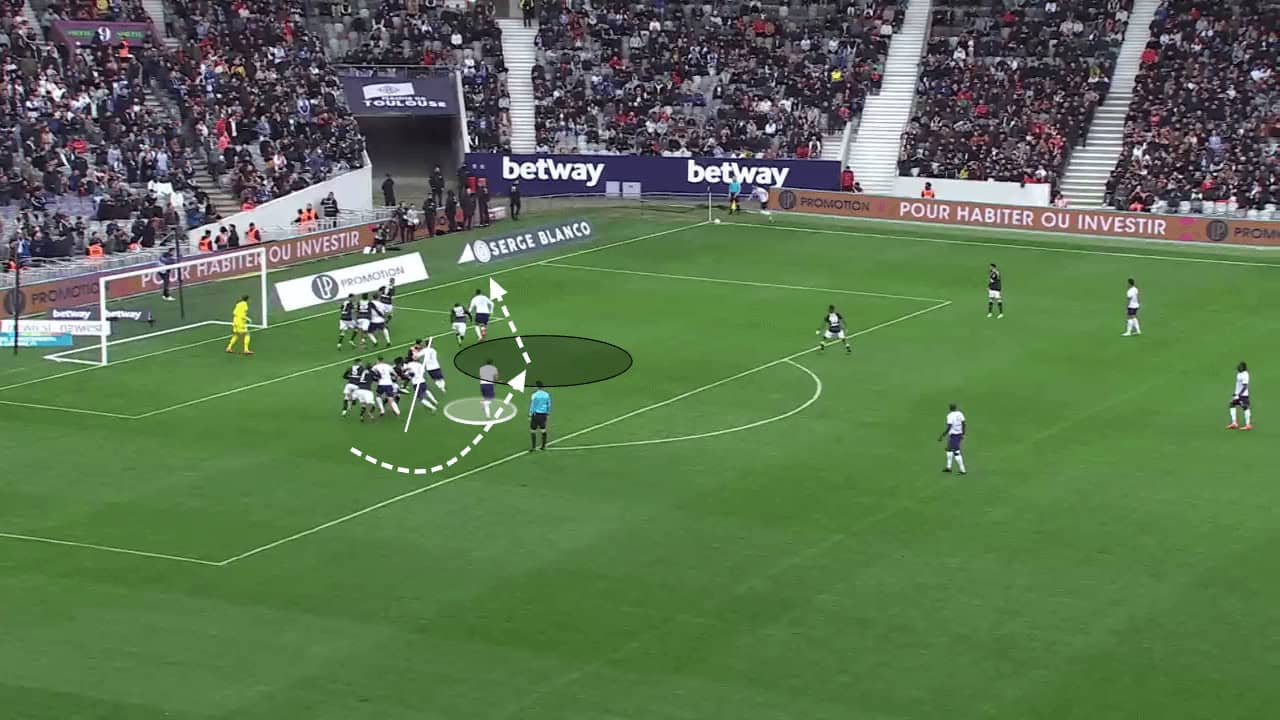
One variation of the low cross method has been to utilise short passes at times when the space is in slightly wider areas around the six-yard box. In these instances, the low cross into the box would be less effective due to the number of players zonally around the six-yard box and near the side of the 18-yard box.
In order to increase the chance of the move working, Toulouse have planted a player just inside the box who receives the short corner before laying it off into the path of the attacker arriving from outside the box. The two nearest attackers inside the box can be seen performing screens to prevent the shot from being closed down and possibly blocked. The short pass rather than low cross is also easier for the attacker to connect with, thus leading to a higher chance of the shot being accurate and powerful.
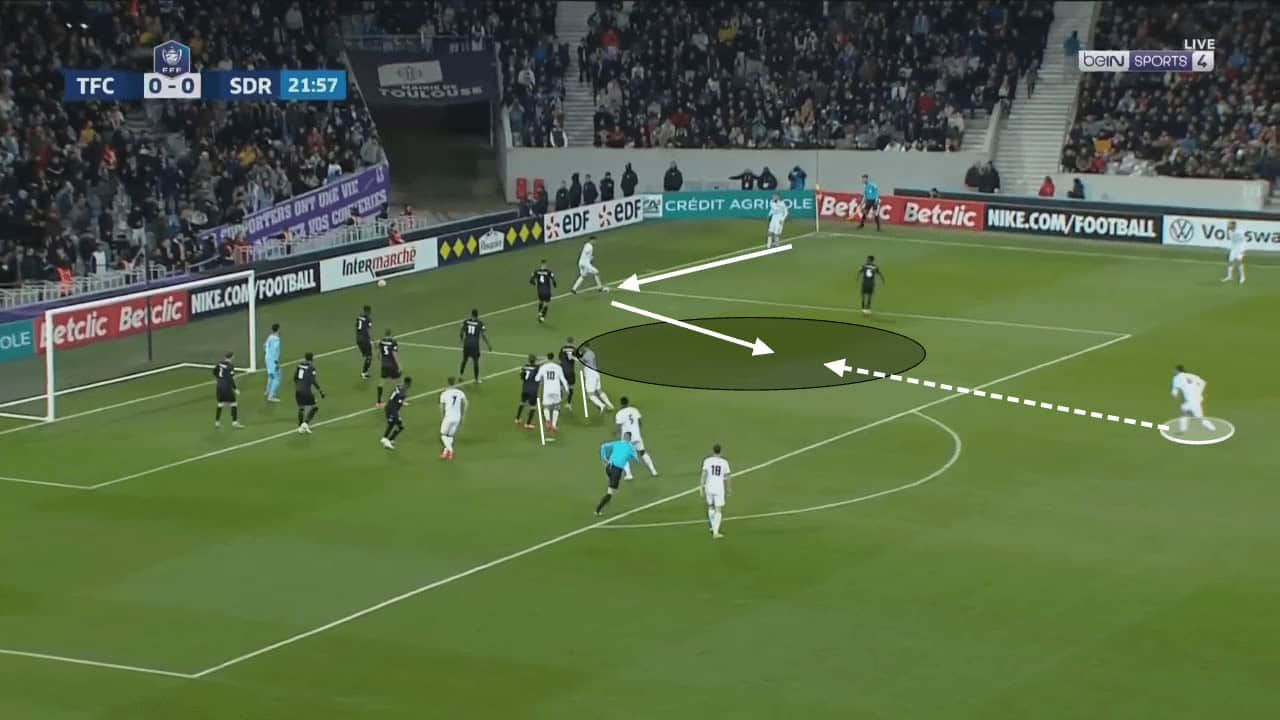
Summary
This tactical analysis has detailed the distinct methods Toulouse have utilised this season in order to gain crucial points in the race to avoid being one of four teams to be relegated.
Their clear use of decoy movements in order to create space for the corner to be taken into has helped to mask some inconsistent deliveries whilst still being able to be an effective and dangerous side from dead ball situations.
Toulouse have impressed with the ability to alternate between vacating target areas prior to corners being taken when the space available is slightly outside of the goalposts, to starting in target areas before making a late decoy run away when attempting to penetrate the centre of the six-yard box.






Comments